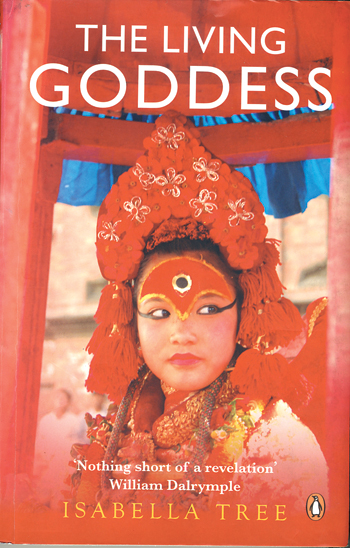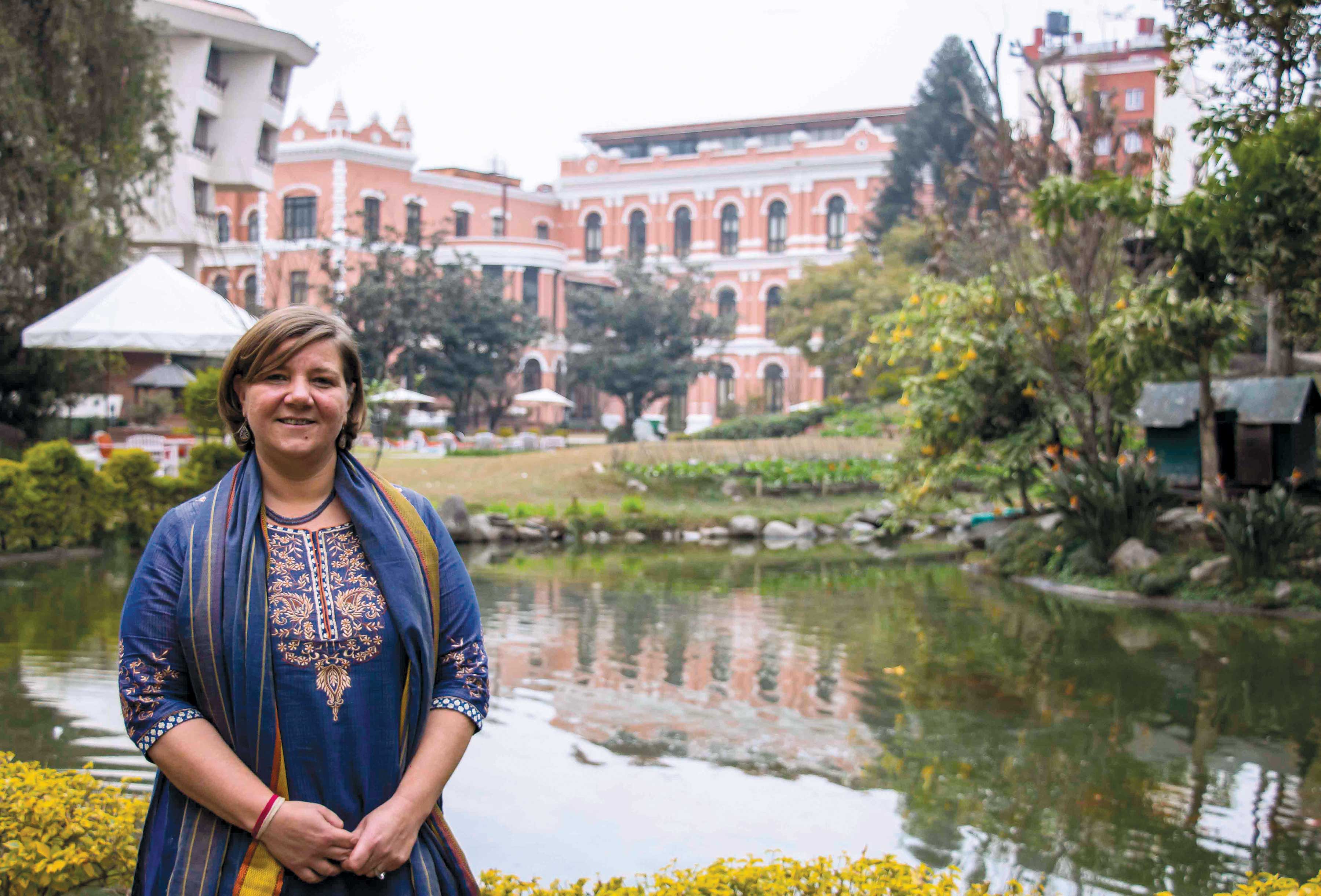The Living Goddess: A Journey into the Heart of Kathmandu
By Isabella Tree
It must be a rare thing for the meeting of two pairs of eyes to result in a book, but that is exactly how Isabella Tree’s The Living Goddess originated. Tree, the wide-eyed English teenager living in a rented flat on Freak Street in 1983, sees the little girl with kohl-bordered eyes gazing placidly down from an ornate window, and is captivated by her enigma. Tree leaves the courtyard but the image of the girl remains in her mind. Questions (who is the girl? where does she come from?) arise in her head. Finding answers to these questions eventually takes the form of a book.
 But as anyone who has stood in the courtyard of the Kumari Chen (Kumari House) knows, getting a glimpse of the Living Goddess in itself is remarkable; anything more than that is almost impossible. Tree runs into a wall trying to pursue her interest until, under tragic circumstances, a little opening appears. In the aftermath of the 2001 royal massacre, seeing the country hurled into uncertainty and chaos, the people closest to the Kumari institution, in an unprecedented move, agree to meet and talk about the Kumari with Tree. Through them Tree delves into the Kumari belief system, relating myths and facts as well as dispelling many of the rumors that have surrounded the tradition.
But as anyone who has stood in the courtyard of the Kumari Chen (Kumari House) knows, getting a glimpse of the Living Goddess in itself is remarkable; anything more than that is almost impossible. Tree runs into a wall trying to pursue her interest until, under tragic circumstances, a little opening appears. In the aftermath of the 2001 royal massacre, seeing the country hurled into uncertainty and chaos, the people closest to the Kumari institution, in an unprecedented move, agree to meet and talk about the Kumari with Tree. Through them Tree delves into the Kumari belief system, relating myths and facts as well as dispelling many of the rumors that have surrounded the tradition.
The book, other than its lucid narrative, has a certain pull for readers, especially Nepalis: as the narrative goes deeper and deeper, readers will become aware of how little they know about the Kumari, and how little truth there is in many of the rumors they have long held as facts. The writer’s exhaustive research (it took thirteen years to research and write the book), her uncanny ability and astonishing good luck in finding people and making acquaintances have yielded a rich blend of mythology, history, folklore, and ancient traditions and practices. Her splendid retelling of popular legends and folk stories, recounted in chapters juxtaposed between accounts of her pursuit of better understanding the Kumaris, provide valuable insights into the background of the Kumari tradition.
The book, as its sub-title A Journey into the Heart of Kathmandu suggests, is also an exploration of what beats beneath Kathmandu. The heart here is the Kumari tradition. Tree weaves into her narrative various aspects of Nepal – history, mythology, politics – that were (and still are) connected to this “heart.” The book is as much about what keeps the Kumari cult alive as what the cult nurtures.
Tantra, the esoteric and commonly misunderstood belief system, receives ample attention in the book. This is not done, however, to dramatize or sensationalize (as any writer might be tempted to do) the connections with the Kumari system, but to shed light on the spiritual foundation of Kumari worship. Conversations with ageing tantric priests, keepers of a tradition on the verge of extinction, royal astrologers, female caretakers and a host of other people who have worked in the shadows to preserve the sanctity of the Living Goddess tradition illumine aspects of the tradition barely known until now.
The book beautifully counterpoints the complexity of Tantric rituals, tales of the conquests of kings and the bloody games played out in their palaces with poignant and humorous tales of a Kumari’s life after leaving the Kumari Chen. The most riveting aspect of the book is the stories and events the author puts forth, gleaned from historical accounts and folklore, that attribute the political events of the past and the ones unfolding during the years of her research to the Kumari. It is through these tales that the author traces the rise of the Kumari to her exalted status as guardian of the country, of how and why a little girl became the centripetal force in a patriarchal country ruled by a king.
Tree has brought to the often sensationalized subject a journalist’s clear-sightedness and impartiality. Her book is an explanation of the Kumari tradition from the point of view of the many institutions and individuals closest to it. It is one of the book’s greater achievements that the author, even after immersing herself in the subject for over a decade, has presented it without any exaggeration. She has seen the Kumari tradition for what it is — an integral part of Newari culture, and at that a recognition and veneration of the divineness present in all girls.
Like all good books about a place, The Living Goddess makes you look at the place described in the book in a new light, with new eyes, sometimes even with closed eyes. And like all good books, it evokes, although it’s not limited to that alone, the essence of the thing it is about.










